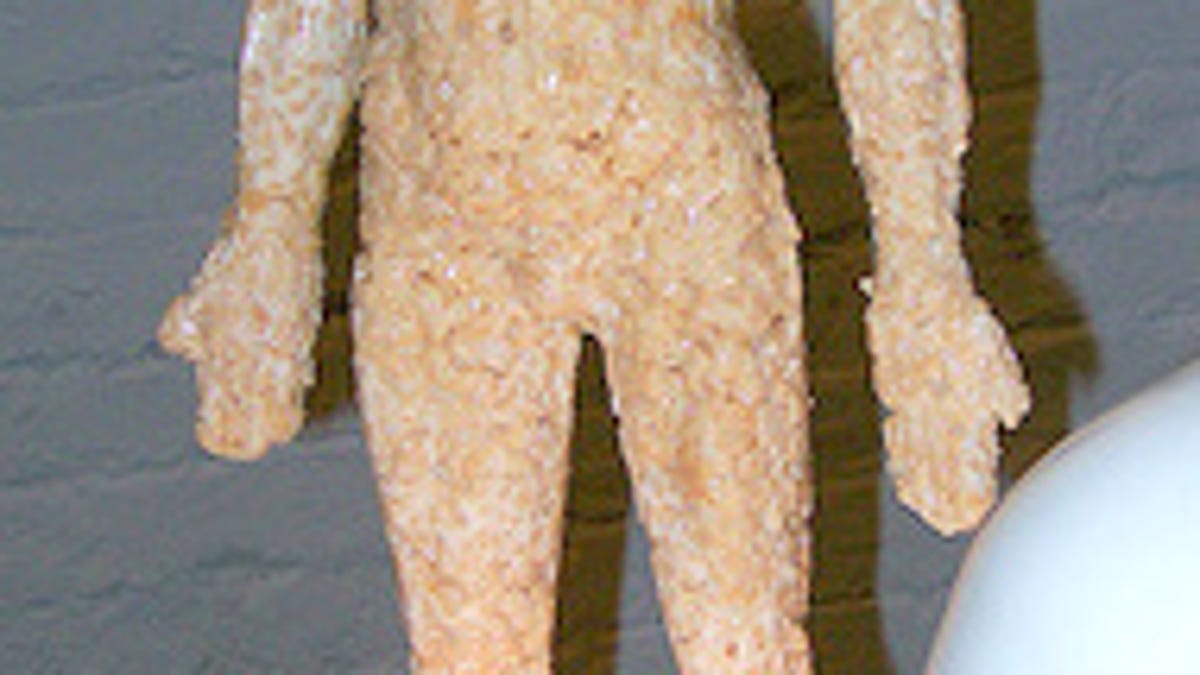The taste of Pittsburgh: Edible robots?
Carnegie Mellon University wants average citizens to celebrate their city's robotic history as part of its 250th anniversary.

Carnegie Mellon University would like to give families in the Pittsburgh area the chance to build a robot.
In celebration of the city's 250th anniversary in 2008, the Robotics Institute at CMU wants to inspire people with Robot 250, in which citizens will have access to robot parts and educational how-to materials.
The program, which started this summer as a series of community events, will run through 2009 and focus on robotics education around the themes of the environment, neighborhood and play, and history and heritage.
"Our goal is to raise the technical literacy of the entire southwestern Pennsylvania area as part of the coming celebration," said Anne Watzman, director of media relations at Carnegie Mellon's School of Computer Science.
Already, the project has seen some interesting takes. Who ever thought that a robot could be not only partially edible, but also tasty?
Dancing robots made of Rice Krispies Treats and robotic cucumber hands were made through an event hosted by a CMU computer scientist, Maya, a design consultancy and technology research lab, and Mattress Factory, a Pittsburgh contemporary-art museum, as part of the Community Open Studios component of Robot 250.
"I think that angle between art and technology is great, and putting 10- or 11-year-old kids (together) with twentysomething computer geeks and 40- or 50-year-olds was great. We pulled together as a team," Mickey McManus, CEO of Maya, said in an e-mail.
Several others robots made through the program will be chosen to become part of an art installation of robots across the city, along the lines of Boston's Cavalcade of Cod and many cities' Cow Parade.
"This will help Pittsburgh celebrate its robotic roots, which stretch back to the 1920s, when Westinghouse created some of the world's first robots," according to a CMU statement.
Another project taking place in conjunction with Robot 250 involves teams of students and mentors set to build 50 robot prototypes by the end of 2007. Twenty of those prototypes are set to be chosen and professionally built.
Included in the program is Carnegie Science Center's Mission Discovery at the Hill House Association, a nonprofit community center in the Hill District area of Pittsburgh, as well the Carnegie Mellon Institute for Talented Elementary and Secondary Students, a program for gifted children.
Robot 250 is being overseen by Project Director Dennis Bateman and Illah Nourbakhsh, an associate professor at The Robotics Institute known for developing a kit that enables people to connect a homemade robot wirelessly to the Internet and make robots from recipes. Carl DiSalvo, a research fellow in Nourbakhsh's Community Robotics, Education and Technology Empowerment Laboratory (CREATE), is also part of the team overseeing the program.
Nourbakhsh has repeatedly said he believes that some of the next robotic innovations may come from people who can look at robots with a fresh eye.
In addition to a grant from The Heinz Endowments, Intel and The Grable Foundation have signed on to give the program more funding, which hopes to make robot building available to about 75,000 Pittsburgh-area children.

